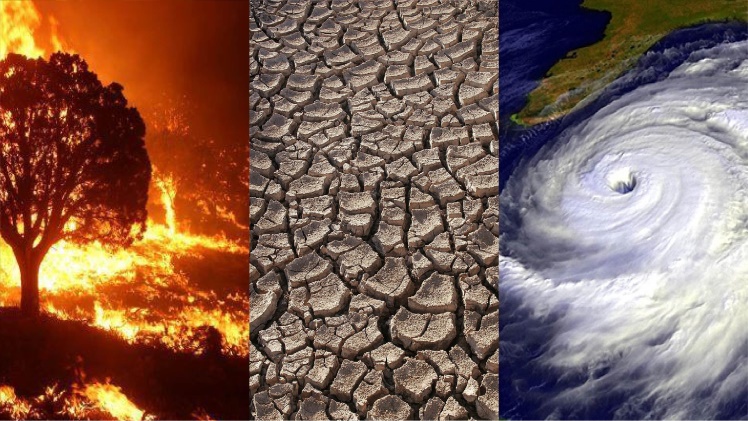In recent decades, the world has witnessed significant shifts in climate patterns, with rising temperatures, altered precipitation regimes, and an increase in extreme weather events becoming the new norm. These changing climatic conditions have profound implications for agriculture, as they directly influence the weather outlook for different crops, posing challenges in predicting and managing agricultural yields. Amidst these challenges, advanced crop modeling has emerged as a crucial tool to navigate the complex interplay between climate and crop production.
Climate Change and Crop Weather Outlook: A Complex Relationship
The intricate relationship between climate change and crop weather outlook revolves around the altering patterns of temperature and precipitation. As global temperatures rise, certain crops are confronted with a changing thermal environment that affects their growth stages, development rates, and overall productivity. For example, warming temperatures can lead to earlier flowering and fruiting in some crops, disrupting synchronization with pollinators and affecting yields.
Moreover, altered precipitation patterns contribute to an erratic distribution of water resources. Some regions experience more intense and prolonged droughts, while others grapple with heavy rainfall and flooding. These conditions can lead to soil erosion, nutrient depletion, and waterlogging, all of which compromise crop health and yield potential. As a result, predicting weather conditions that align with traditional planting and harvesting calendars becomes increasingly challenging.
Challenges in Predicting and Managing Agricultural Yields
The unpredictability of climate-induced weather patterns introduces significant challenges for farmers, agricultural planners, and policymakers. Traditional methods of predicting weather patterns, often based on historical data, may prove inadequate due to the rapid shifts in climate. This uncertainty has a cascading effect on crop yields, food security, and global supply chains. The difficulty in accurately forecasting extreme weather events, such as sudden heatwaves, frost events, or unexpected storms, can lead to devastating crop losses.
Furthermore, managing agricultural yields under changing climate conditions requires adaptive strategies. Farmers must make informed decisions regarding crop selection, planting dates, irrigation management, and pest control. However, the variability in climate patterns makes it difficult to develop one-size-fits-all approaches. What works well in a certain region one year might fail spectacularly the next, necessitating constant adjustment and innovation.
Advanced Crop Modeling: Bridging the Gap
In this scenario of heightened climate variability, advanced crop modeling emerges as a key solution for bridging the gap between changing weather patterns and agricultural productivity. These models leverage cutting-edge technologies, including remote sensing, satellite imagery, and computational algorithms, to simulate and predict crop growth and yield outcomes under different climatic scenarios.
Advanced crop models take into account a wide range of factors, from temperature and precipitation to soil characteristics, nutrient levels, and pest pressure. By integrating these variables into a holistic framework, these models offer more accurate predictions of how crops will respond to varying weather conditions. This information equips farmers with valuable insights into the optimal times for planting and harvesting, the need for supplementary irrigation, and even potential threats from pests and diseases.
One of the significant benefits of advanced crop modeling is its ability to facilitate risk management. By providing farmers with forecasts of potential yield losses under different climatic conditions, they can make more informed decisions regarding crop insurance, resource allocation, and overall farm management. Policymakers and agricultural extension services can also use these models to design targeted interventions and support systems that are tailored to the unique challenges posed by changing climate patterns.
The Road Ahead: Integrating Knowledge and Action
While advanced crop modeling holds great promise, its successful implementation requires the integration of scientific knowledge, technological innovation, and on-ground experience. Collaborative efforts between researchers, farmers, policymakers, and technology developers are crucial to ensure that these models accurately represent the complex interactions between climate and agriculture.
Moreover, a multidisciplinary approach is essential for optimizing the benefits of advanced crop modeling. Climate scientists, agronomists, data analysts, and social researchers must work together to refine these models, validate their accuracy, and understand the socio-economic implications of their recommendations. This collaborative approach will ensure that the insights generated by advanced crop modeling are not only scientifically robust but also practically applicable and beneficial to those who rely on agriculture for their livelihoods.
Conclusion:
The changing climate patterns present a formidable challenge to predicting and managing agricultural yields. The unpredictability of weather events requires innovative solutions, and advanced crop modeling emerges as a potent tool to address this challenge. By combining the power of technology and scientific research, these models provide farmers and stakeholders with actionable insights that can help navigate the uncertainties of climate change. As the agricultural sector strives to adapt to the new normal of climate variability, advanced crop modeling offers a ray of hope for sustaining food production and ensuring global food security.

